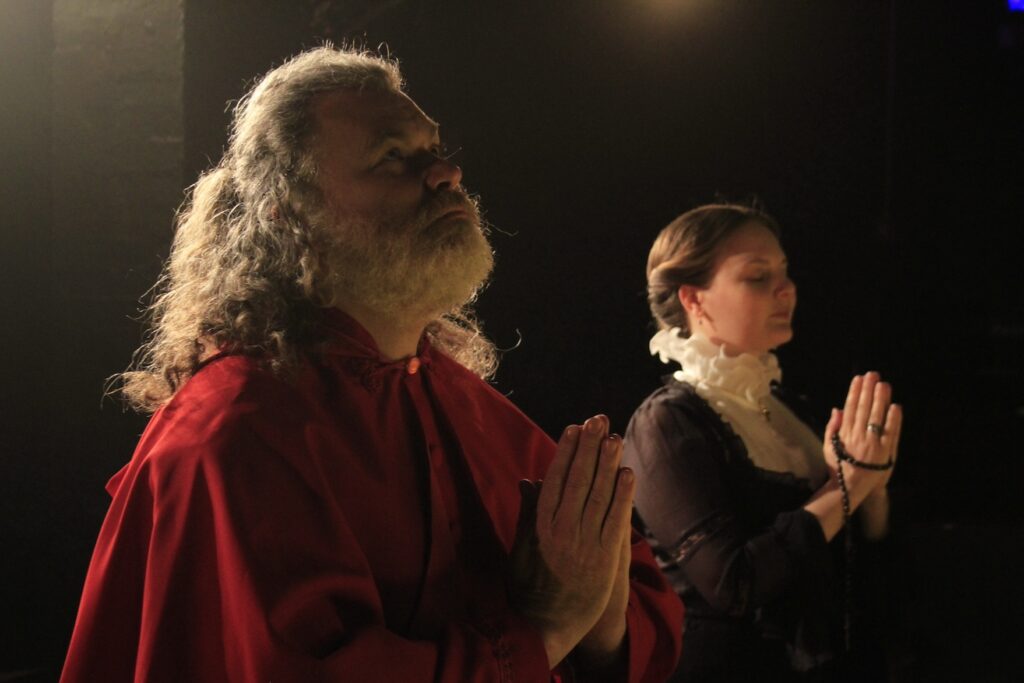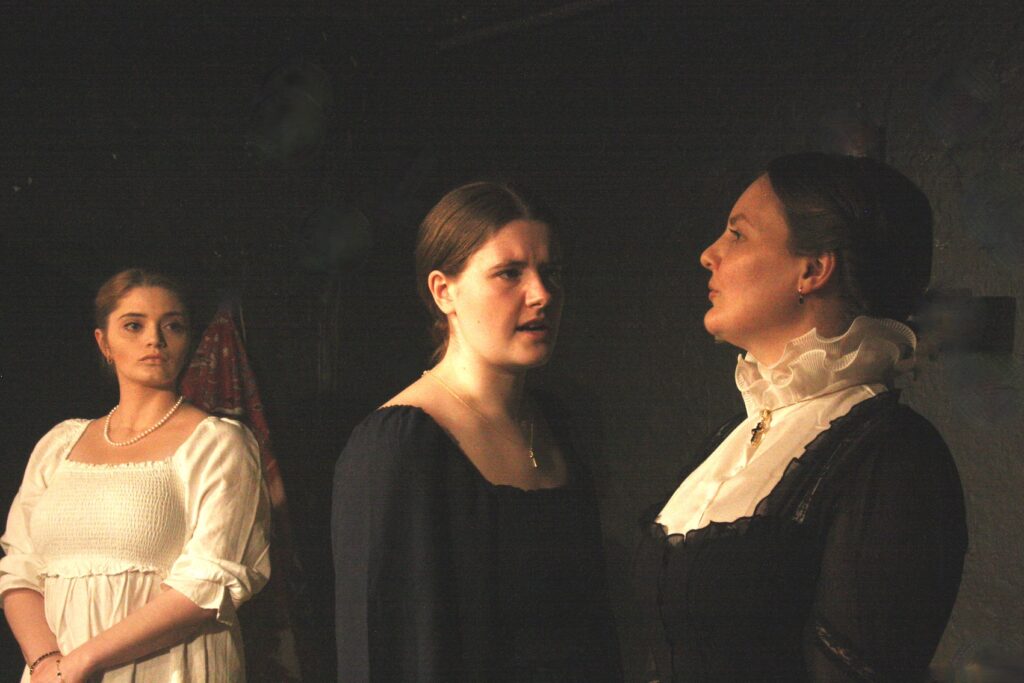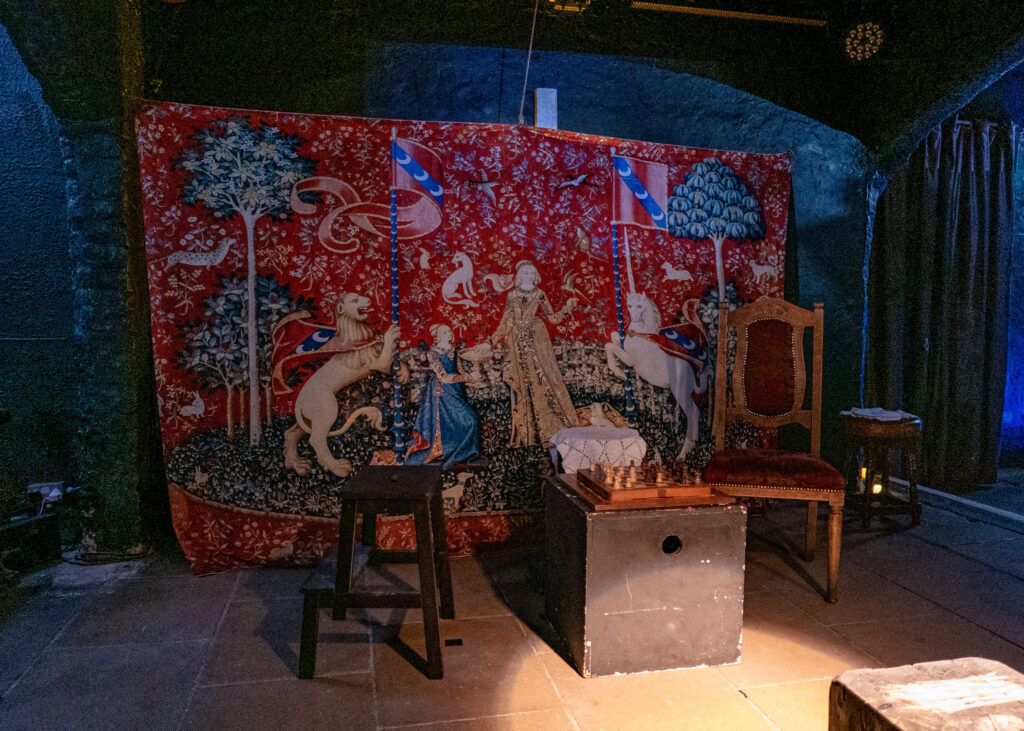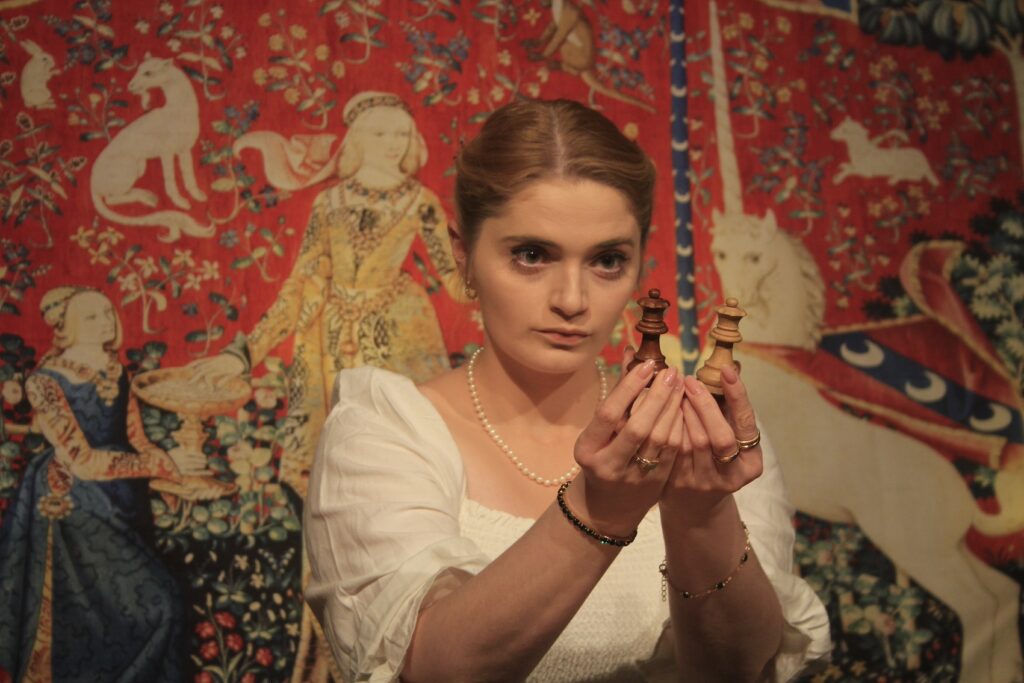[AD – PR invite*]
★★★★
A couple of weeks ago I interviewed Sharon Willems, the Artistic Director of Barons Court Theatre, about her return to the director’s seat with ‘Three Queens’: Rosamund Gravelle’s Tudor era play. Focusing on three powerful women: Queen Mary I, Princess Elizabeth and Lady Jane Grey, the play takes place on the eve of Lady Jane Grey’s planned execution, as the Queen, Princess and Cardinal Reginald Pole try to convince the nine-day Queen to convert to the Catholic faith. Whilst not strictly based on historical events, extensive research has been at the heart of the work, with the writer and team behind the play looking into who the women were and their subsequent relationships as part of the creative process. It was exciting to finally be at the theatre last night to see what Sharon and the company have been working on, after my early preview.

Background
The entire dramatic play takes place across one night, with the characters unable to rest ahead of the planned events for the next day. Lady Jane Grey (Martha Crow) is confined to the Tower of London and is about to be executed over her attempt to take the throne and commitment to her protestant faith. The Cardinal (Les Kenny-Green) attempts to persuade Queen Mary I (Becky Black) to pardon her cousin, but the visibly distressed Queen can’t see past Lady Jane’s determination to stay true to her values and stand up for protestants of the country. The somewhat mischievous Princess Elizabeth (Eliza Shea) is brought in to mediate and the writing looks at the complex relationships between the three women. Focusing on the monarchy during a deeply divisive time for the country, the play puts a spotlight on the family at the centre of the conflict and their disputes over religion.

Music and sound
Three Queens features some Tudor-themed singing and chants, with Dimitri Kennaway providing the music. It helps to draw audiences into the world of the historical figures and is a raw addition to the play, ensuring continuity between scene changes. Sound effects representing inclement weather help to set the scene for this tense evening, but they feel a little unnecessary. Rosamund’s dialogue provides plenty of tension thanks to compelling delivery from the cast and the play would have the same impact in my opinion without the sound effects.
Costume design
Princess Elizabeth and Lady Jane Grey wear simplistic modern day dresses with ruffled fabric that instantly evokes a historical theme. They could easily pass for everyday outfits at first glance, but when combined with updo hairstyles, the costumes are authentically Tudor in their style and manipulation of fabric. Queen Mary I in contrast wears a more traditional number with a distinct period collar, cementing her status over the other influential women. In this Fringe setting, it is admirable how the creative team have been able to recreate Tudor fashions, utilising subtle details to transport audiences to the historical period.

Lighting, projections and staging
The majority of the play is set in the rooms of the palace, specifically one of Queen Mary’s candlelit chambers where alongside the Cardinal, Mary turns to prayer at this moment of personal torment. The director (Sharon Willems) and lighting designer (Leo Bacica) have used electric tealights and projections to recreate a chapel in the chamber, displaying stained glass windows on the back wall of the stage. The tealights have been arranged in collective formations to add impact, notably in the form of a cross which matches the religious focus of the writing.

The only thing that lets the staging down is the sudden return to daylight at the end of the tense discussions. Whilst this is accurate in terms of the day break, it feels like you are drawn away from the Tudor visuals on stage. In a way I wish we could have been kept in the dark right until the end, both literally and metaphorically, wondering what lies ahead for the characters.
A historical triumph at Barons Court
The creative choices in Three Queens are proof that you don’t need a large budget to create a strong piece of period theatre. What Sharon and Leo have been able to create through experimenting with space, lighting and projections is nothing short of astounding. What I witnessed yesterday evening is easily the best staging I have seen at the venue.

The cast are excellent, particularly Eliza Shea as the young but daring Princess Elizabeth and Sally Sharp as Kat Ashley: Elizabeth’s lady-in-waiting. I would like to have seen a little more depth to Queen Mary I and Lady Jane Grey, extending beyond the frustration of the situation, but for such a short play, audiences are provided with plenty of opportunity to get to know these complex women. I am personally thrilled for the company that they get to perform ‘Three Queens’ for three weeks. Performances run until Saturday 11th May, with tickets available via the Barons Court website.
Thanks for reading my blog today.
Love Kat xxxx
*My ticket for Three Queens was gifted in exchange for an unbiased review.

Comments